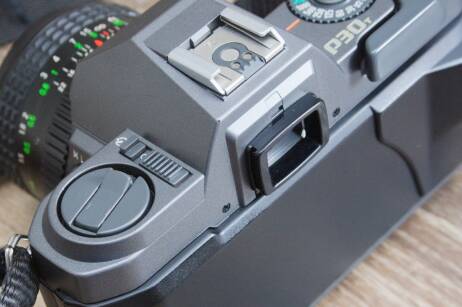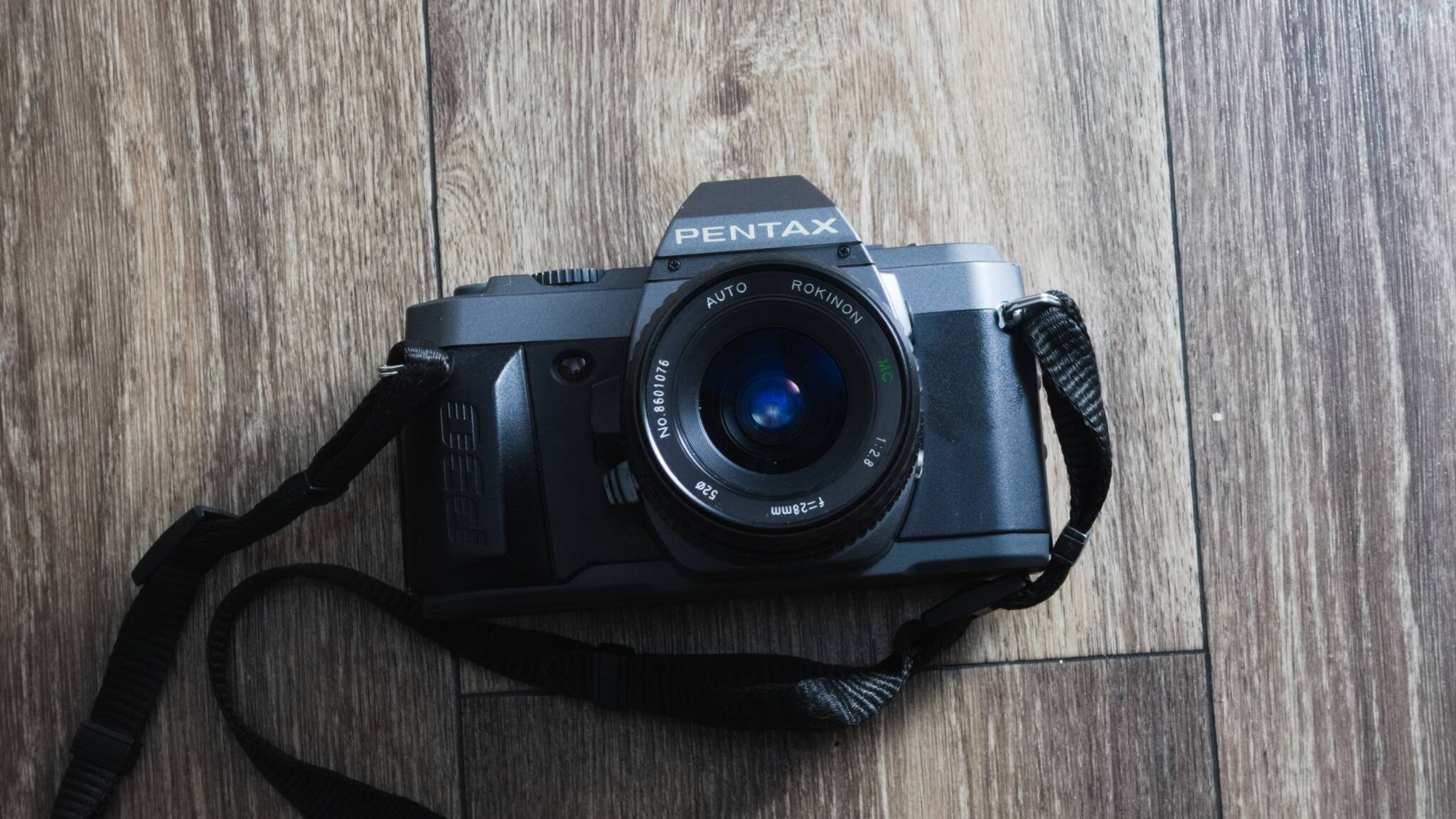On a visit to a local thrift store, in search of a cheap study desk, I chanced upon this beauty sitting on one of the shelves. Wrapped in a foggy plastic bag, I couldn't really tell what exactly it was from a distance. I thought it looked interesting, and after a closer inspection I found out it was a camera. But what kind? I couldn't tell. When I finally held it in my hands though, it felt quite solid, looked really cool, and also appeared to be in good condition. The colour of the body was a lovely matte grey, which was quite unusual for me. Another feature that stood out for me was how in part it looked like a retro camera, yet it somehow felt modern. For a cool price of 5 bucks who would say no to this baby. After all, if it didn't work, I will probably turn it into a nice shelf piece. Truth is, it did work, and thus began the journey that includes me writing this blog.
In fact, I found this camera to be much more interesting after I took it home and fiddled with it some more. As far as looks are concerned, like most cameras of that era, the body of this camera is made of metal and wrapped in a leathery material on the front. On the back, however, it seems a trade-off was made and plastic was used for the film door. Even with this different material, the film door still feels solid, and even has a handy window for viewing the information on the currently loaded film. There's a very prominent grip in front, which is stylishly embossed with the letters "P30". Also on the back there is a hump that, I want to believe, provides a thumb rest. After some googling around, I found out this camera was produced somewhere between 1990-1991. That seems to provide some explanation for why the design of the camera seems to attempt to strike a balance between two different eras of cameras. In several ways, the camera looked like the manual SLRs that were just being phased out, and in others, it looked like the newer automated SLRs that were just appearing.
For handling, the grip (and hump) built into the body makes the camera very comfortable to hold. All the dials, levers, and switches on top of the camera are placed flush with the surface. This placement, I think, gives the camera a touch that — may have — seemed more modern at the time the camera was made. You may want to believe that the choice of flush controls on this camera compromises the user experience on this camera. I personally feel this design choice adds more to the user experience, and the flush widgets are actually a delight to use. The shutter speed dial is placed such that you could turn it with very little effort using your index finger. The shutter release button is placed right in the middle of the shutter speed dial so your index finger doesn't really have to travel much when alternating between changing shutter speeds and taking your shots. If you should extend your index finger a little lower to the side of the lens you could easily push the depth of field (DOF) preview button. Extending your index finger for the DOF may not even be necessary since you could easily dedicate your middle finger to this function. The film advance lever travels smoothly when used and, satisfyingly pops-up when slightly lifted by your thumb. It equally — satisfyingly — returns to rest, flush with the surface, with a nice click when pushed back. In addition to the dials and knobs I have described, the camera has a power switch (which doubles as a self timer switch), a film rewind lever and an exposure lock button.


For optics, the P30t features a Pentax KA lens mount. My unit came mated with a wide 28mm, f2.8 Auto Rokinon lens from Ricoh. Exposures are made by an electronic focal plane shutter that is capable of speeds from 1s to 1/1000s and a bulb mode. Due to the electronic nature of the shutter mechanism, the shutter release will not work without batteries. The SLR viewfinder is very clear with a diagonal split image focusing screen and a micro-prism ring. A LED readout in the viewfinder displays the shutter speed as well as some information about the current metering mode in use. Talking of metering modes, this camera is capable of three depending on the type of lens you use. If you use regular Pentax K mount lenses you have the option of either full manual metering, where you decide all parameters yourself, or an aperture priority mode, where you select the aperture and leave the camera to decide the shutter speed. With the Pentax-A lenses however, you get an extra program mode where the camera selects the best shutter speed and aperture combination for you.


One other feature that gives away the "moddern-ness" of this camera is its use of DX encoded film. This is obviously handy since you do not have to manually set the speed of the film. The sad side effect of the use of DX encoded film in this camera is that, the film speed cannot be overridden in anyway. This means some creativity will be required when you need to push or pull film on this camera. Oh, and I forgot to add that this camera lacks an exposure compensation dial.
With all that said, the shooting experience with this camera, for me, was fun and exciting. For an SLR, it didn't feel too heavy and I was able to lug it around without much stress. Loading film into this camera was easy. A quick load mechanism in the back helped with the spooling of the film. The shutter was not really silent and still clickity-clacks when released. After a shot is taken, the advance lever travels about 180 degrees with very tiny, barely noticeable, clicks some might find satisfying. Optically, the Rokinon lens proved to be a winner: it produced some really sharp, nicely coloured images with beautiful contrast. In all, the Pentax P30t may look like a simple camera without many features — you know, something meant for beginners or amateurs. Well, if simplicity was the goal of its design, then the designers did a good job. My inexperienced self enjoyed every bit of this camera and, I'm sure if you really love your photography, you would too.














































